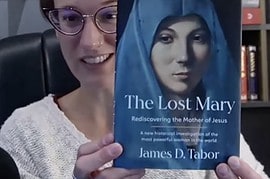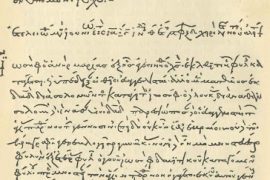Was the Oldest and Most Significant Dead Sea Scroll Mistakenly Declared a Forgery in 1883?
I am inviting you to a special live Youtube presentation by Ross K. Nichols, author of the 2021 book, The Moses Scroll, today at 11:30 EST, with discussion following. Here is the link:
https://www.youtube.com/live/L6ZGaFgZc0I
If you can’t watch this live, it will be recorded and you can catch it later. Either way, you won’t want to miss this presentation with new up-to-date information we have uncovered in the past four years of tracking this amazing 19th century story. Ross Nichols is also author of the forthcoming article in the Brill Encyclopedia of the Dead Sea Scrolls dealing with the “Shapira Strips.”
Today marks a special day in the history of Dead Sea Scrolls discoveries. On March 8, 1889, one-hundred and thirty-six years ago, the famous “Shapira” scrolls were displayed publicly at a special meeting of the Burton-on-Trent “Natural History and Archaeological Society” in England, and subsequently disappeared from public view. Their owner, a Dr. Philip Brooks Mason, a prominent physician and naturalist by hobby, died in 1903, and presumably they were part of his estate. I have been involved since 2019 with a team of researchers, investigating what might have happened to these leather “strips” as they are called at the time, so they can be examined again with the scientific methods use today, that could settle once and for all the question of forgery or authenticity.

Here is the backstory:
These scrolls were the talk of all of Europe just six years earlier, in 1883, when their owner, Moses Shapira, a Jerusalem antiquities dealer, brought them to the attention of scholars in Germany France, and England. Shapira reported he bought them from Bedouin in 1878, who claimed to have discovered them in a cave, on the east side of the Dead Sea in the Wadi Arnon. The texts themselves were written in paleo-Hebrew and appeared to be a version of the final address of Moses to the people of Israel on the other side of the Jordan, before they entered the Promised Land. Within a few months most of the scholars involved had declared them to be a clever forgery–either by Shapira or someone who duped him.
The case was pretty well closed until the 1950s, after the discovery of the library of Dead Sea Scrolls, beginning in 1947 on the west side of the Dead Sea south of Jericho at Qumran. and the years following, and a few scholars began to wonder whether Shapira’s “strips” might have been authentic after all. One of the main objections in Shapira’s time is that leather texts could not have survived for thousands of years.
I attach here my own take on the Shapira strips in my Biblical Archaeology Review article written with my co-researcher Idan Dershowitz, on the Case for Authenticity, as well as this link to my BAS lecture on the topic in 2021: “Was the Most Significant Dead Sea Scroll Mistakenly Declared a Forgery in 1883?“









Comments are closed.